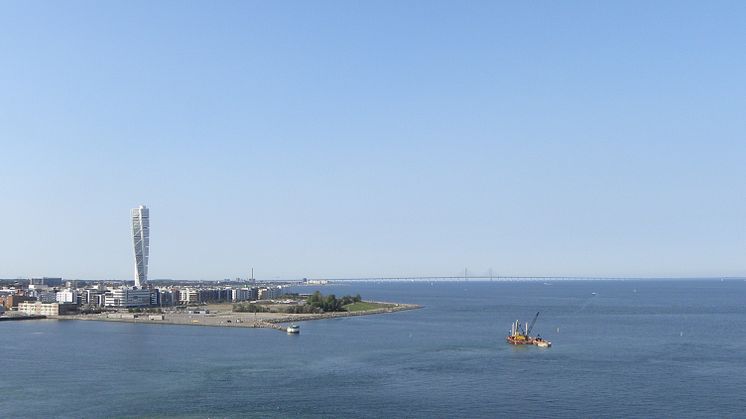
News -
The dredging plant has left CMP in Malmö for now
About every other year CMP dredges the sea bed on the Swedish side to maintain accessibility for vessels in the port and the approaches. The work process begins with what is known as multi-beam echo sounding, which measures the distance to the sea bed using sound pulses. This is highly advanced technology, used in accordance with requirements from the Swedish Transport Agency and the Swedish Maritime Authority.
Dredging represents a logistical challenge, this time with three parties involved. Once echo sounding had been completed and the theoretical volumes calculated, the actual dredging was performed by Svensk Sjöentreprenad AB, which used a dredging plant to dig up the sediment from the sea bed, the dredging mass. The dredging mass was then transported onwards on a barge to the Bulk Port in Swede Harbour, for unloading using CMP’s own equipment. Once the dredging mass has been unloaded, Stefan Kristenssons Åkeri AB takes over and takes care of the rest of the work, transporting it and laying it out in the area to be filled.
14,000 cubic metres of dredging mass becomes new land
“The Northern Harbour is being extended with dredging mass to create new land, which also makes it a sustainable way to get rid of the mass through recycling,” says Hans-Olov Ivarsson, Head of the Infrastructure Department in Malmö.
Dredging not only enables accessibility to be maintained for vessels in the port, the dredging mass is also then used to extend the land area and level out the existing land. This year around 14,000 cubic metres of dredging mass have been taken to the Northern Harbour for this purpose.
A job in two stages
Dredging started early this spring and continued for six weeks. Follow-up revealed, however, that more sediment needed to be removed from the sea bed to guarantee safe accessibility for vessels in the port. Supplementary dredging therefore took place after the summer over a period of two weeks. Accessibility for vessels has now been secured for the time being, and it may be up to two years before we can see the dredging plant in action here once more!
